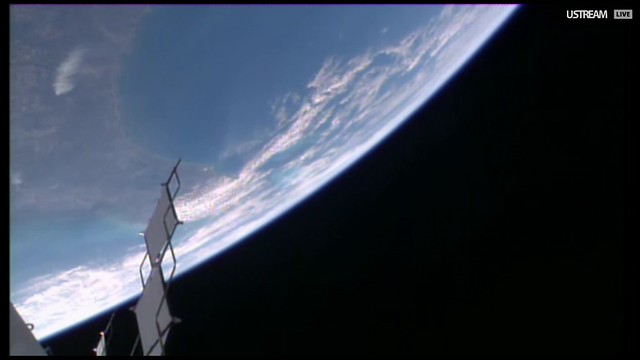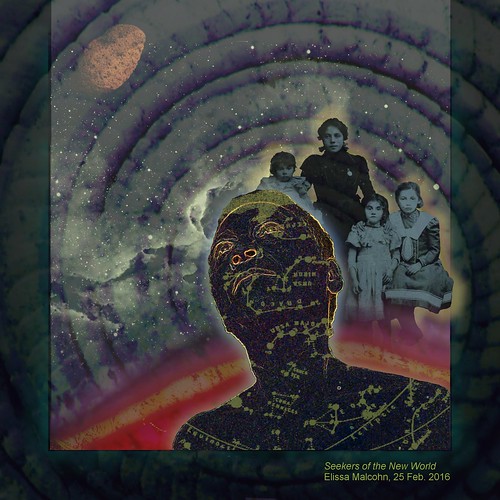Meditations and Explorations in Here Be Dust
- March 5, 2016, 2:36 p.m.
- |
- Public
Insurance rep: Why did you pay [the hospital]?
Me: Well, when you’re flat on your back in an ER triage bed with a blood clot that could kill you, and someone from the hospital is standing over you asking for money, that could be a bit of a motivator.
The above is a highlight from the half-day on March 3 that I spent on the phone with both my insurer and the hospital over a claim that has been reprocessed and is still in limbo after multiple mixed messages. Fortunately, the hospital has now put that particular bill (above and beyond what I had already paid) on hold until we figure it out. Stay tuned.
March 4 marked my second cancerversary: the second anniversary of the day I had received my diagnosis. It almost escaped my notice this year. In one sense it was a far cry from my first cancerversary, which – being the first – had felt much more profound. That said, much of what I had written a year ago still holds, like this observation:
“One year out, there are days unremarkable for their ordinariness. I live my life much the way I always have – a bit slower, a bit more health-conscious in general. But I also get Twilight Zone moments, as in, ‘How could I have possibly had cancer? That’s just weird.’ …. On other days I am Certified Cancer Patient (TM)…“
These days, this blood clot business adds to the weirdness. It introduces an added layer of caution; while on blood thinner I must try to avoid cuts and things like bumping my head. As I had during cancer treatment, I feel like a one-person experiment. On a quasi-subconscious level, I wonder what mischief my body will get into next.
Recently I signed up with CalBug Expeditions. (“Calbug is an effort to digitize terrestrial arthropod-specimen records with a focus on California, with specimen images drawn from among eight entomological collections. The Calbug Science Team will then use the collection data to assess how arthropods have responded to climate change and habitat modification.”) Although most records come from California, I have transcribed others from Arizona, Oregon, Massachusetts, and other states; and Mexico, Costa Rica, Greece, and other countries.
It’s become a meditative exercise. Some of the pinned insects I’ve viewed are a century old. Their collectors are long gone. In one case, the town on whose dirt a beetle had crawled no longer exists; it’s now submerged beneath a lake. All that remains is a well-preserved, tiny corpse.
The more recent specimens evoke a parallel timeline in me, as in: This one was being captured while I studied in my college dorm room, oblivious to its experience. I become interested in their short, little lives, especially when I find myself transcribing an occasional additional note like, “Found on dandelion.”
(My fascination extends to living bugs, too. Recently my partner found a tiny female wasp in our carpet and escorted her outside after I used my USB microscope to record photos and video)
I have also been watching the International Space Station’s livestream (and this HD stream), which offers views of Earth from different cameras. (“Since the station orbits the Earth once every 90 minutes, it experiences a sunrise or a sunset about every 45 minutes.”) I’ve caught a spectacular sunrise and several sunsets, and took this screen cap as ISS made a pass over Florida:

Occasionally one hears audio of conversations between the crew and Mission Control, but there is something supremely peaceful about sitting up late at night and viewing, fullscreen, the Earth from space in silence.
On a somewhat related note, I have made this submission to NASA’s #WeTheExplorers campaign:
I’ve taken a few elements from my piece “Observer,” including an altered photographic self-portrait overlaid with a stencil made from William Peck’s The Constellations and How to Find Them. The background stars come from a stencil created by Stefano Fiore. I have added and tweaked my photographs of a snail shell found in my neighborhood and pumice that I had brought home from Mount St. Helens in 1981.
The pumice here serves as a stand-in for the asteroid Bennu, which will be visited by NASA’s Origins, Spectral Interpretation, Resource Identification, Security-Regolith Explorer (OSIRIS-REx) spacecraft. Says NASA, “The #WeTheExplorers campaign invites the public to take part in this mission by expressing, through art, how the mission’s spirit of exploration is reflected in their own lives. Submitted works of art will be saved on a chip on the spacecraft.”
According to the mission description, “Bennu may contain the molecular precursors to the origin of life and the Earth’s oceans.” I thought it appropriate to represent Bennu using something that had come forth from the depths of the Earth via volcanic eruption.
I have also added a photograph of my maternal grandmother’s family, taken before they had crossed the Atlantic Ocean to come to the U.S. “What does it mean to be an explorer like OSIRIS-REx?” asks NASA. Says the mission description, “The OSIRIS-REx Mission seeks answers to questions that are central to the human experience: Where did we come from? What is our destiny?” My ancestors had been explorers in their own right. All of us, in our own way, seek a new world in a quest to rediscover our origins.
From the beginning I have viewed my cancer and its treatment as “a perilous adventure.” I remain an explorer even as I sit quietly at my desk, meditating on a century-old beetle, the view from space, or my body’s forays into the unknown.




GypsyWynd ⋅ March 05, 2016
Love the artwork. The We The Explorers Campaign made me think of the children's book Molly's Pilgrim , and of this quote: "We are all wanderers on this earth. Our hearts are full of wonder, and our souls are deep with dreams."--Gypsy Proverb
Deleted user ⋅ March 05, 2016
I followed the link to your CSN blog entry. Love the way you write about your experiences. And all the cool things you are interested in. You have so very many gifts. I actually know an entomologist personally. Well, he is my friend's husband. I have met him once. :-)
ConnieK ⋅ March 05, 2016
Nice wrap-up. Full circle. The Space Station passed directly over our heads about two years ago. It was the closest to earth it would come. I was able to see lights inside and the struts underneath the ISS. What struck me most was how quiet it was as it passed overhead. Truly an awesome sight!
Stay strong in your battle and congrats, Survivor!